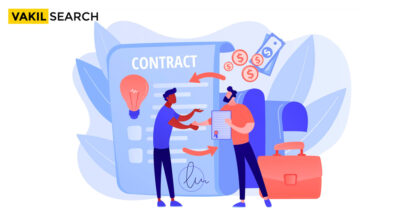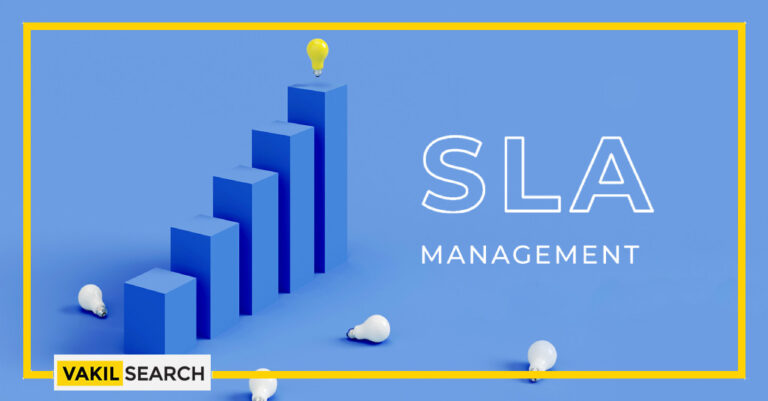This blog will provide you with information on SLA, who requires an SLA, what are its type, its key components, its examples, and other relevant details.
A SLA refers to a contract between a service provider and customers. It defines the services and the standards provided by the service provider. An SLA is bidirectional, involving two parties.
SLAs are needed by service providers to aid them in managing customer expectations as well as defining the level of severity and circumstances when they will not be held liable in case of issues in performance or outages. The benefit that customers get from SLAs is that the contract lists the service’s performance characteristics – this can be compared against SLAs of other vendors — and outlines the means of service issue redressal.
An SLA provides a high level of specificity of the services provided, along with the metrics which shall be employed for measuring the service provider’s performance.
Most Common Forms/ Types of SLAs
SLAs have three basic types:
- Internal (between an enterprise and internal customer)
- Customer (between an external customer and its service provider)
- Multi-level (agreement has various levels geared specifically to a series of customers who avail of the service).
A sla or an external service agreement is drawn up between a service provider and an external customer of the service provider.
A customer SLA is one in which the service provider and its customer reach a negotiated agreement about the services to be provided. As an example, an organisation could negotiate with its IT service provider to specify in detail the expectation and relationships.
The following are included in a customer SLA:
- Specific details regarding the customer’s service expectations
- Provisions of the availability of service
- Service level standards for each service being provided
- Responsibilities of both parties
- Procedures for escalation
- Terms of SLA cancellation.
Internal sla is drawn up between the organisation and the organisation’s internal customers, such as its site, a different department, and a sister organisation. For example, an organisation could draw up an internal SLA between its sales and marketing teams.
Multi-level SLA divides the agreement into several levels, which will be specific for a series of customers availing of that service. For example, one provider of software as a service (SaaS) makes available its basic services and support to every customer who uses the product. For customers who go in for different service levels, the provider would make it available at different price ranges. These different service levels will get layered within the multi-level SLA.
Who Requires a SLA?
It is believed that the use of sla started with network service providers. In the present times, there is the widespread use of SLAs in all types of fields, especially those related to the information technology industry.
It is also seen that various corporate IT organisations, especially the ones using IT service management, draw SLAs with internal customers in other departments of their organisation to compare, justify, and measure the service provided.
Key Components of SLA
The key components of an SLA are:
- Overview of the agreement
- Services’ description
- Exclusions
- The service performance level and measurement metrics
- Redressal
- Stakeholders
- Security measures
- Risk management and disaster recovery
- Tracking and reporting of the service
- Review and processes for change
- Process for termination
- Authorised signatures.
SLA Examples
- In the first sla example, consider that a Data Centre is going in for a sla with a service provider. The SLA will need to document the requirements of the data centre and the agreed-upon service that the service provider will ensure.
The following list provides an example of the type of content that will form part of the SLA.
- Guarantee of uptime which is generally 99.99% for any enterprise-level, modern data centre
- Environmental conditions clearly defined
- Technical support guarantee
- Detailed precautions to ensure customer asset security.
2. For the second sla example, consider an SLA for an internet service provider.
The following list provides an example of the type of content that will form part of the SLA.
- Uptime guarantee
- Packet delivery expectations
- Latency.
Customer-Based SLA and Multi-level SLA
Customer-based SLA
The customer-based sla is an agreement with a single customer, and it incorporates all of the services that the customer uses. Let us take an example. Mr K avails of the services of a telecom operator. He makes use of the telecom operator’s SMA services, voice services, data services, and various other services that the telecom operator has on offer. To avail of all these services, there is a single contract or sla drawn up between Mr K and the telecom operator. In the same way, if there is an IT service provider who provides various services to a business and customers, and when all of these service levels form part of a single SLA for the service provided, the SLA will be considered customer-based.
Multi-level SLA
The multi-level sla has the customer’s organisation as the focus point. Every service, as well as its interrelationship with subordinate services, are considered while defining the multi-level structure of the SLA.
A multi-level SLA is customised for the requirements of the company that is the end-user. Such an agreement gives the user the flexibility of integrating various conditions into a single system to create a service that is more suitable for itself.
A multi-level SLA will address contracts at various levels as mentioned below:
Corporate level
This type of multi-level SLA will not need to be updated often because the issues it addresses are typical of an unchanging nature. Such an SLA incorporates a comprehensive discussion for every aspect of the agreement that is relevant and applies to every customer within the organisation.
Customer level
This form of multi-level SLA will discuss every service issue that affects a specific customer group. Yet, it will not consider the type of user services.
To take an example, consider that there is a request from a company for augmenting the level of security in one department. While the same security agency is securing the entire company, the requirement is that one customer in this company is made more secure.
Service level
In this form of multi-level SLA, every aspect attributed to a specific service for a customer group will be included.
Conclusion
A key aspect of a multi-level SLA is the regular review and maintenance of the sla. This is an important part of the management of the SLA. Each time there is a change in service or there is a change in a service’s service level target, the review of the sla and incorporation of the outcome of the review as a revision in the agreement becomes imperative. The modified new sla has to reflect all of the changes that have been made to either the service or to the service level targets.
Also, Read:











